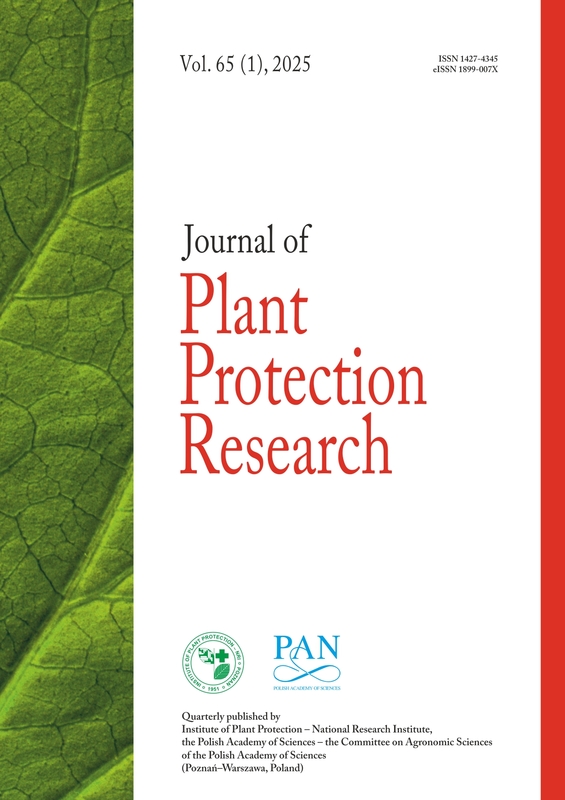ORIGINAL ARTICLE
Detection and characterization of palm lethal decline phytoplasmas, subgroups 16SrIV-A and -D, in Phoenix canariensis and Syagrus romanzoffiana in Puebla, Mexico
1
Campus Tabasco, Postgraduate College, Cárdenas, Tabasco, Mexico
2
Herbario y Jardín Botánico, Vicerrectoría de Investigación y Estudios de Posgrado, Benemérita Universidad Autónoma de Puebla, Blvd. Valsequillo y Av. San Claudio, Ciudad Univer, 72570, Puebla de Zaragoza, Mexico
3
Centro de Agroecología, Instituto de Ciencias, Benemérita Universidad Autónoma de Puebla, Edificio VAL 1, km 1.7 carretera San Baltazar Tete, 72960, San Pedro Zacachimalpa, Mexico
A - Research concept and design; B - Collection and/or assembly of data; C - Data analysis and interpretation; D - Writing the article; E - Critical revision of the article; F - Final approval of article
Submission date: 2024-05-07
Acceptance date: 2024-08-02
Online publication date: 2025-03-26
Corresponding author
Journal of Plant Protection Research 2025;65(1):103-111
HIGHLIGHTS
- Group 16SrIV phytoplasmas were detected for the first time in Puebla, Mexico.
- Lethal yellowing (16SrIV-A) is reported for the first time in a non-coastal region.
- Evidence suggests Texas Phoenix palm decline (16SrIV-D) as an emergent disease.
- Both pathogens have now been reported in all major climate types of Mexico.
KEYWORDS
TOPICS
ABSTRACT
Phytoplasma subgroups 16SrIV-A and -D are the agents associated with two diseases that significantly threaten palm cultivation in the Americas, namely lethal yellowing (LY) and Texas Phoenix palm decline (TPPD), respectively. Recently, in Puebla State, Mexico, several Phoenix canariensis Chabaud and Syagrus romanzoffiana (Cham.) Glassman palms used as ornamentals began to show symptoms resembling those of TPPD and LY. Therefore, the present study aimed to demonstrate the spread of group 16SrIV phytoplasmas to Puebla, Mexico. Ten symptomatic individuals of both palms were sampled and a nested PCR assay with primer pair P1/P7 followed by LY16Sf/LY16Sr was performed to detect phytoplasma presence. A fragment of about 1.4 kb was amplified in six palms, three (of four) P. canariensis and three (of six) S. romanzoffiana. Sequence analysis of the amplicons revealed that the phytoplasma isolates from Puebla were members of group 16SrIV, subgroups -A (one isolate from P. canariensis) and -D (rest of isolates). This study reports the first occurrence of TPPD and LY on ornamental palm species in the state of Puebla, Mexico.
CONFLICT OF INTEREST
The authors have declared that no conflict of interests exist.
We process personal data collected when visiting the website. The function of obtaining information about users and their behavior is carried out by voluntarily entered information in forms and saving cookies in end devices. Data, including cookies, are used to provide services, improve the user experience and to analyze the traffic in accordance with the Privacy policy. Data are also collected and processed by Google Analytics tool (more).
You can change cookies settings in your browser. Restricted use of cookies in the browser configuration may affect some functionalities of the website.
You can change cookies settings in your browser. Restricted use of cookies in the browser configuration may affect some functionalities of the website.




